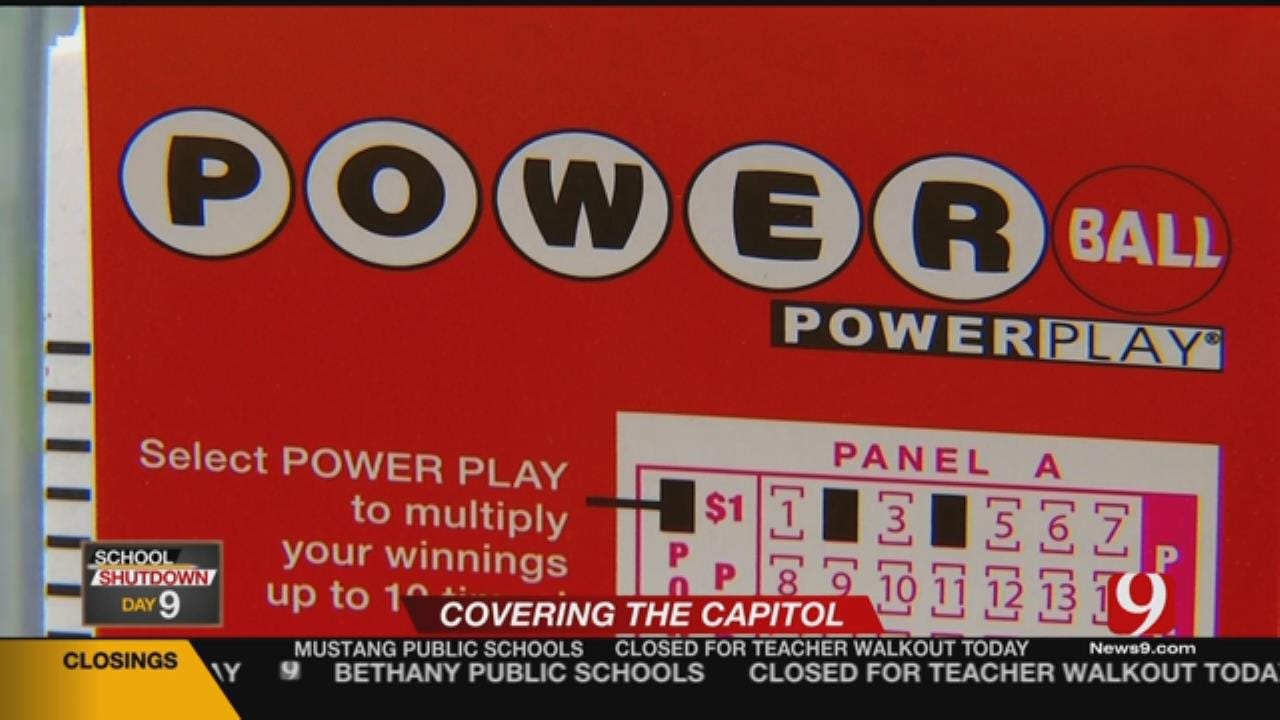Debunking The Big Four Education Funding Myths
<p>As the Oklahoma teacher walkout enters its ninth day, the state’s largest teacher organization says lawmakers have brought them 95 percent of the funding they’re looking for. </p>Thursday, April 12th 2018, 8:39 am
As the Oklahoma teacher walkout enters its ninth day, the state’s largest teacher organization says lawmakers have brought them 95 percent of the funding they’re looking for. However, after signing two revenue raising measures late last week, Gov. Mary Fallin said she was done with education funding.
That announcement has prompted the questions; what about the funding we’re supposed to be getting and can we shuffle funds to get more money into classrooms?
News 9/News On 6 took a look at the four most common questions we get.
TAKING A GAMBLE ON EDUCATION
LOTTERY
When it went into place, Oklahoma schools were promised $300 million for schools, so where did all that money go? As it turns out, the lottery never came close to bringing in that much money.
Last year, the lottery only collected $53 million for schools. The average since 2008 is closer to $65 million. That money has to be split up across all of education funding and only a portion of that goes to common education. With an overall budget of $6 billion for the State Department of Education, the lottery makes up less than 1 percent of the budget.
CASINOS
How about casinos? Don’t they bring in billions?
The answer is yes but again only a small portion of that goes to schools. According to the Oklahoma Gaming Commission, tribes give just 6 percent of their total revenue to the state. That gets spread across state agencies, only netting 2 percent of the overall budget for education.
Lawmakers did recently pass a new bill that would allow ball and dice games into casinos that’s expected to bring in $22 million for schools. Some lawmakers opposed the idea, hoping to use ball and dice games as a bargaining chip when the state is forced to renegotiate the Tribal Gaming Compact in 2020.
THINK SMALL
LOWER SUPERINTENDENT PAY
The other most common suggestions for finding funding is cutting administrative costs. Opponents of taxes have been keen to point to waste in districts including over paid superintendents.
Most of how districts fund superintendents is set at the local level meaning if teachers and parents think their superintendent is overpaid, that's something they need to bring up with their school board.
However, looking a bit more broadly, district administrative costs account for just 3 percent of the overall budget or roughly $18 million of the $6 billion budget, according to US Census data from 2015. Even if the state was able to get rid of all administrative costs, Oklahoma's spending per student would only go up a few hundred dollars and wouldn't change our low national ranking in spending. Currently, Oklahoma ranks 47th in the nation for per pupil spending.
SCHOOL CONSOLIDATION
How about school consolidation, then?
That has the most promising funding for education. Right now, a bill amendment in the House would lower the number of school superintendents from 535 to 72, effectively making school districts bigger. According to the bill’s author, Rep. Tess Teague said the amendment saves the state an estimated $44 million.
But the Oklahoma State School Board Association says not so fast. The state only gets so much money and that has to be spread to districts per student so in the end schools don't save anything because the number of students doesn’t change.
In the past several years, several bills have been proposed to consolidate school districts but none have made it to a vote after facing strong opposition from rural members of the legislature. Fallin has signed off on an executive order mandating consolidation but her office has not given a timetable for when that could happen.
More Like This
April 12th, 2018
November 13th, 2024
October 28th, 2024
October 17th, 2024
Top Headlines
December 22nd, 2024
December 22nd, 2024
December 22nd, 2024
December 22nd, 2024











